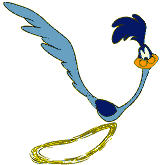Faster chips

We keep seeing stories about faster and faster microchips. The latest story is here link
in the NY Times Technology Briefing for today. Announcing Lucent technology to speed wireless connectivity. It's not clear from the short story exactly how the chips work to speed things up,
To achieve the benefits, base stations that handle wireless traffic would have to be upgraded to take advantage of the chips' capacity to run data through multiple antennae at one time. Lucent and other equipment makers are negotiating standards for such technology, which could provide a relatively inexpensive way to sharply increase the capacity of existing wireless networks.
To see more about Lucent Technologies' Bell Labs work on microchips, visit here. It's designed for investors, not scientists, but it has interesting info and images. Cheaper and faster also needs to mean cooler, and laser-reading technology is affecting electronics as well. See NASA link here to read about laser-pulse electronics, developed in NASA's Small Business Innovation Research (SBIR) technology transfer program. More on microchips that use laser light to communicate at the speed of light rather than chugging electrical impulses over micro-thin wires hereat the NY Times, reporting on Intel laser-reading technology.
Currently fiber optic networks are used to transmit data to individual neighborhoods in cities where the data is then distributed by slower conventional wire-based communications gear. The laser chips will make it possible to send avalanches of data to and from individual homes at far less cost.
They could also give rise to a new class of supercomputers that could share data internally at speeds not possible today.
The breakthrough was achieved by bonding a layer of light-emitting indium phosphide onto the surface of a standard silicon chip etched with special channels that act as light-wave guides. The resulting sandwich has the potential to create on a computer chip hundreds and possibly thousands of tiny, bright lasers that can be switched on and off billions of times a second.
The Warner Brothers' Roadrunner, symbolizing blazing speed (and a little fun!) is courtesy of http://www.dia.uniroma3.it/db/roadRunner/icons/roadrunner.gif
No comments:
Post a Comment